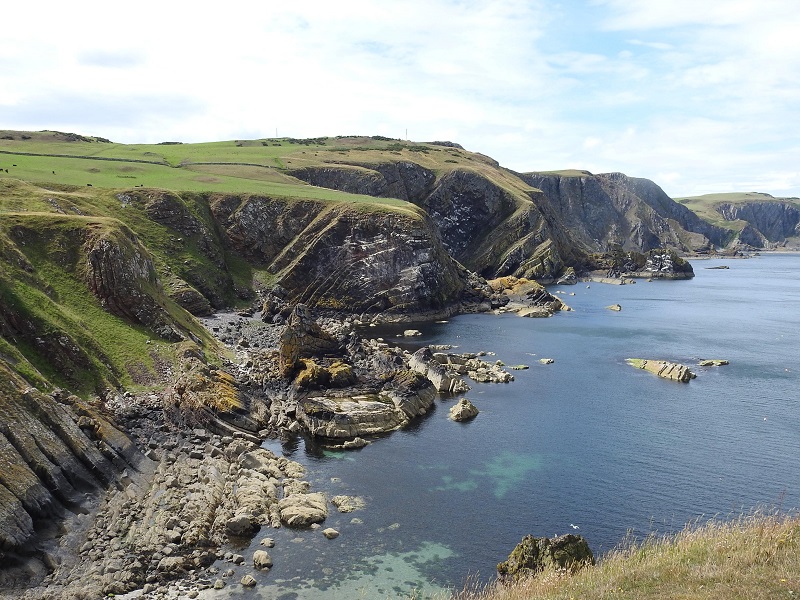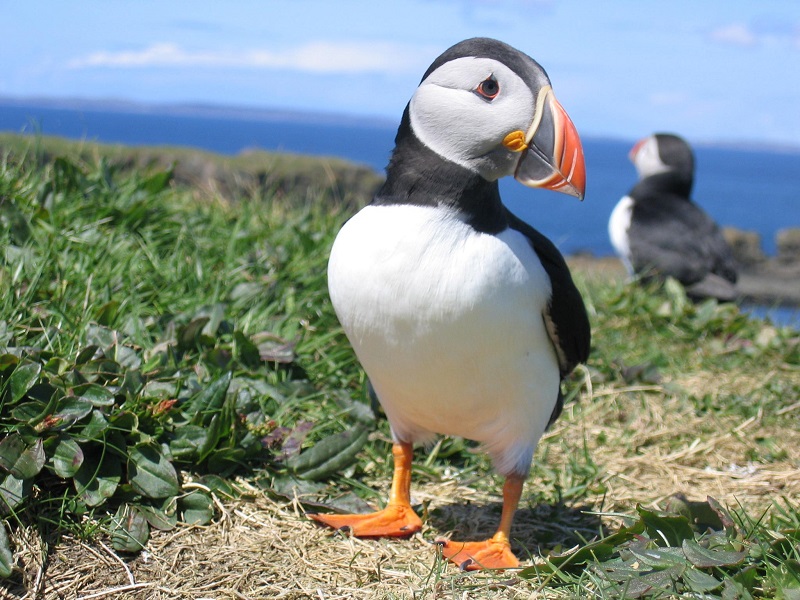A Volcanic Birth
400 million years ago, Scotland was a very different place to how it is today. Rocked by volcanic eruptions and covered in swathes of lava flows, a rocky promontory now known as St Abb’s Head was formed on the coast in the Scottish borders. The evidence of this violent birth still remains in the geology of the headland. St Abb’s Head is made of hard, volcanic rock that has stood firm over time while the softer surrounding rock has eroded away. The result is a headland that stands high above the sea, consisting of steep cliffs and gullies that are ideal for nesting seabirds. Not only that, but the cliffs also make for spectacular views and a great coastal walking experience.

The headland is quite accessible, located near the small fishing village of St Abbs. It’s also a national nature reserve and St Abb’s Head is steeped in a history that is as rich as its wildlife. One of the summits is home to the remains of a 7th century monastery and a series of shipwrecks on the jagged rocks during the 1950’s led to the construction of a small lighthouse. There is also a free visitor centre at the base of the headland, another reason that is likely to make a visit to St Abb’s Head a memorable experience.
Seabird City
St Abb’s Head is famed for its seabird colony, whose numbers reach their peak during the breeding season in the summer. Depending on the year, between 40,000 and 60,000 birds choose to nest on the 90 metre cliffs and this can provide fantastic birdwatching experiences that are almost unparalleled on the Scottish mainland. Take a walk along the cliffs during the summer season and you can expect to see a host of species that include fulmars, kittiwakes, guillemots and razorbills. Keep an eye out in particular for young chicks being fed but be sure to stay safe, as some areas on the cliffs can be quite exposed. With thousands of birds calling to each other, the soundscape itself can be a real highlight.

St Abb’s Head is also home to one of the nation’s most charismatic seabirds – the Atlantic Puffin – and the headland is a great place to spot these birds. Puffins nest in clifftop colonies and dig burrows in areas of grassland, into which they lay their eggs. The adults can often be spotted sunning themselves at the entrances to their nests on warm days, or floating in groups down in the water. With their colourful bills and slightly comical walking style, puffins are known affectionately as the “clowns of the sea” and can be one of the most entertaining seabirds to watch. Top tip for spotting puffins at St Abb’s Head: visit in late spring or early summer and look out for flashes of orange on grassy cliff areas.
A Wildflower Patchwork
Another great reason to visit St Abb’s Head in the summer months is that the area will be bursting with wildflowers. The grassland areas are particularly diverse and there might be as many as 20 native plant species in one square metre of land. Some of the more colourful species include rock rose, sea pinks and wild thyme. The flowers attract a variety of insect life, including butterflies and moths, with the reserve being a hotspot for the Northern Brown Argus – a butterfly species that is rare throughout much of the United Kingdom.
Lying behind St Abb’s Head is a scenic valley that encloses a small freshwater loch named Loch Mire, which might look natural but is actually man-made. The loch can be popular among migrating birds during the spring and summer and is also home to a rich array of freshwater species such as sticklebacks, frogs and beautiful damselflies. Wildlife can also be found in the ocean, of course, and lucky visitors might encounter views of Grey Seals fishing near the shore, as well as dolphins and porpoises. All in all, St Abb’s Head is a unique destination with a range of habitats and is a fabulous place for a wildlife watching day out.
